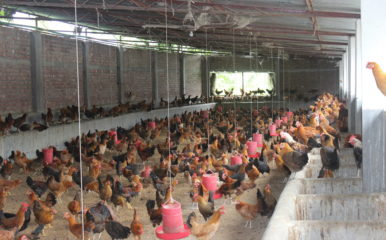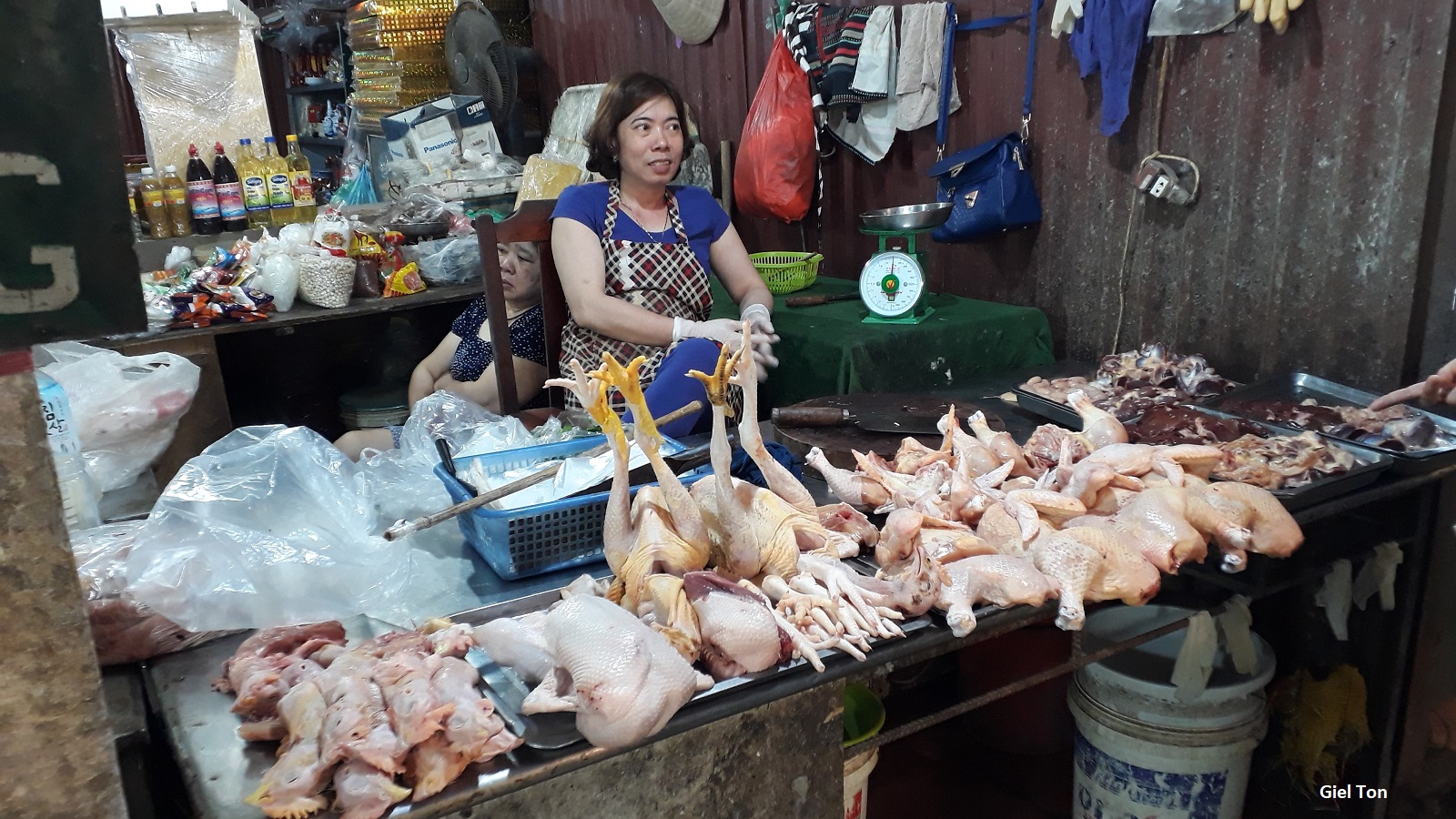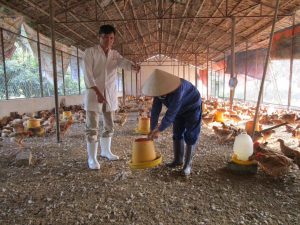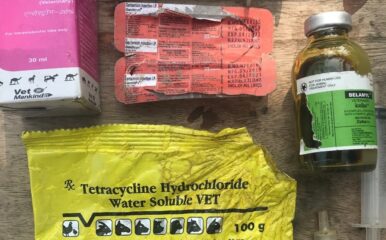
Poultry in Vietnam
Vietnam’s poultry population grew at an average of 5.6% in the 10 years to 2020. It is projected to reach over 500 million in 2025, with 18 billion eggs produced annually.

Avian influenza control
An epidemic of highly pathogenic avian influenza (HPAI) hit Vietnam at the end of 2003 and the virus is now endemic.
The persistence of HPAI, as well as other animal diseases, has a significant impact on the development of livestock production in Vietnam and remains a challenge. In particular, the emergence of Africa swine fever (ASF) at the beginning of 2019 was anticipated to have major implications for the poultry industry as consumers switch from pork to other meats such as chicken, with the resulting increased chicken production leading to an increased risk for avian influenza.
The Vietnam government, in collaboration with international and development organisations such as the Food and Agriculture Organization of the UN (FAO), World Organisation for Animal Health (OIE) and USAID, has implemented national animal disease control programmes for the period 2019-2025. These aim to minimise animal disease outbreaks, build disease safety zones and develop safe supply chains.
However, most animal holdings are small with poor biosecurity. They are often located near residential areas, making it difficult to apply biosecurity and disease control measures.
The illegal poultry trade along the long border between Vietnam and China is an added challenge.
Outbreaks of avian influenza still occur sporadically in provinces of Vietnam. There are three strains of HPAI virus circulating, including A/H5N1, A/H5N6 and A/H5N8. Since mid-June 2021, A/H5N8 has appeared in Vietnam and has spread in 10 provinces and cities, forcing the destruction of more than 23,000 birds.
Poultry production

Around 70% of the total chicken population in Vietnam is kept in households, mainly for commercial purposes. They provide 60% of the country’s egg yield. The number of chickens in households range from a few birds (backyard) to up to 2,000, with a popular flock size of several hundred birds.
Most of the remaining production is accounted for by farms with flock sizes that average 2,000-5,000. The number of farms keeping 8,000-15,000 birds, however, is growing, and there are some contract farms with common flock size of 4,000-5,000. These are integrated poultry farms, in which feed, drug and breed companies collaborate with poultry farmers. These bigger farms house chiefly exotic and cross breeds while indigenous breeds and cross-breeds are mainly in household production.
Poultry are usually traded by direct sales of live birds to traders at the farm or household gate, or via contract companies, which often have their own slaughter houses and processing plants, or via farmer cooperatives.
Livelihoods and exports
For backyard farmers and smallholders, poultry production provides important animal protein sources for home consumption. It can also account for up to 30% of cash revenue, providing income to pay for clothes, school fees and more.
In medium and larger farms, poultry production contributes the main income for farmers and provides work opportunities for women and middle-aged and older people. These people often have to leave their work in factories due to age and work pressures, and have limited opportunities for other work.
Forecasts project that 15-20% of all poultry products from Vietnam will be destined for the export market in the near future.
Covid-19 pandemic
According to the Vietnam Poultry Association (VIPA), the country’s poultry population fell 36.3%, from 512.7 million birds in June 2020 to 326.8 million in June 2021. The chicken population dropped 35% from 409.5 million to 266.2 million; egg production fell 20% from 16.7 billion to 13.3 billion eggs.
Around half the large poultry farms and 70% of poultry smallholders had to reduce their production scale or temporarily stop restocking during the COVID-19 pandemic. The price of feed increased around 30%.
The market price of poultry products continues to fluctuate greatly. When COVID-19 cases increased and social distancing was imposed, the price of poultry products such as white chicken broiler dropped two thirds. When poultry producers stopped restocking as a result of COVID-19, leading to scarce supply, poultry prices increased 50-100%.
The unpredictable COVID-19 situation, bringing with it social distancing and other restrictions, continues to affect poultry production and distribution networks. Poultry producers are likely to continue to be afraid of restocking, leading to shortages. Another scenario sees many producers restocking simultaneously, leading to an increased risk of disease outbreaks, including avian influenza.
The future
Post COVID-19, poultry trading could be more diverse as some consumers have developed online buying habits, opening up opportunities for online trading. A diversification of delivery networks could reduce the pressure on the traditional distribution networks as they adapt to the ‘new normal’. Poultry farms which join in the linkage model from ‘farm to fork’, increase biosecurity, and/or integrate with feed/breed companies are more likely to be able to maintain stable production, distribution and poultry prices.


